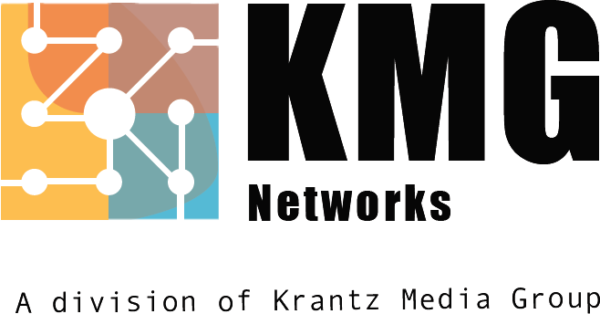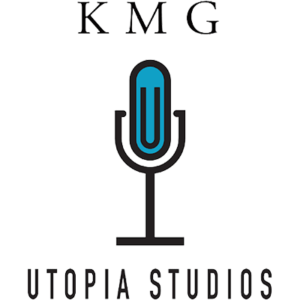Welcome to the era of digital storytelling, where podcasts have become the preferred medium for sharing ideas, stories, and expertise. With the surge in podcast consumption, aspiring content creators are seeking platforms that simplify the podcasting process without compromising on quality. In this comprehensive guide, we'll delve deep into how TalkShoe, a leading podcasting platform, makes podcasting easy and accessible for everyone.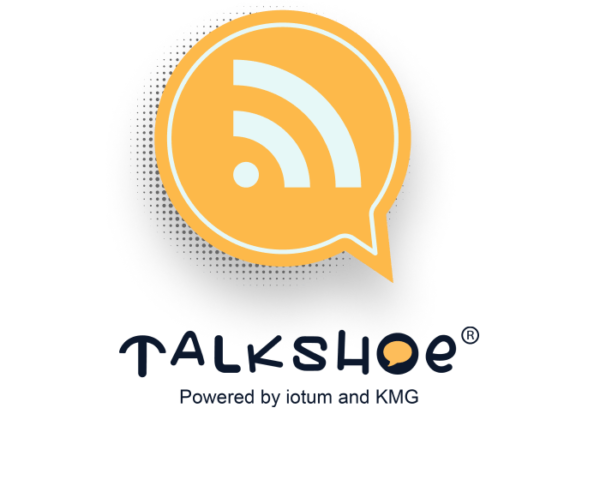
Why Podcasting Matters
Podcasting has emerged as a powerful medium for communication and storytelling. With over 2 million podcasts and 48 million episodes available across various genres, podcasting has transcended niche interests to become a mainstream form of entertainment and education. The intimate nature of audio content allows creators to forge deeper connections with their audience, making podcasts a highly engaging and immersive experience.
The Rise of TalkShoe
Founded in 2005, TalkShoe has been at the forefront of the podcasting revolution, offering a comprehensive platform for both seasoned podcasters and newcomers alike. With its intuitive interface and robust features, TalkShoe has earned a reputation as the go-to platform for podcasters looking to streamline their workflow and amplify their reach. Over the years, TalkShoe has evolved to meet the changing needs of content creators, staying ahead of the curve with innovative features and cutting-edge technology.
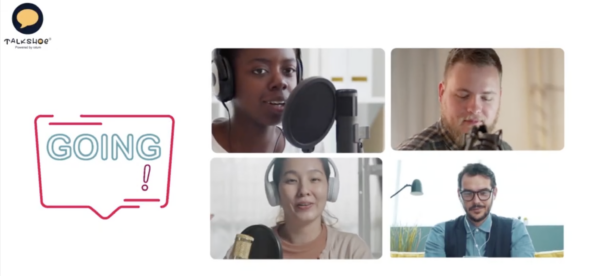
User-Friendly Features
One of the key advantages of TalkShoe is its user-friendly interface, designed to simplify every step of the podcasting process. Whether you're a tech-savvy podcaster or a complete novice, TalkShoe's intuitive tools make it easy to create high-quality podcasts with minimal effort. Let's explore some of the standout features that set TalkShoe apart from other podcasting platforms.
Recording Made Simple
With TalkShoe, recording your podcast is as easy as pressing a button. Whether you're hosting a solo show or conducting interviews with guests, TalkShoe's recording feature ensures crystal-clear audio quality with minimal setup required. Gone are the days of complicated recording setups and expensive equipment. With TalkShoe, all you need is a microphone and an internet connection to start recording your podcast anytime, anywhere.
Editing Tools for Perfection
Polishing your podcast has never been easier thanks to TalkShoe's built-in editing tools. Trim, splice, and enhance your audio with precision, all within the TalkShoe platform. With real-time previews and seamless integration, editing your podcast has never been more efficient. Whether you're removing ums and ahs or adding in sound effects and music, TalkShoe provides all the tools you need to create professional-quality podcasts that stand out from the crowd.
Seamless Publishing and Distribution
Once your podcast is ready for the world to hear, TalkShoe simplifies the publishing and distribution process. With just a few clicks, you can publish your episodes to major podcasting platforms such as Apple Podcasts, Spotify, and Google Podcasts, reaching millions of listeners worldwide. TalkShoe also offers customizable RSS feeds and embedding options, giving you full control over how your podcast is shared and consumed. Say goodbye to the hassle of manually uploading and distributing your episodes – with TalkShoe, everything is automated, leaving you more time to focus on creating great content.
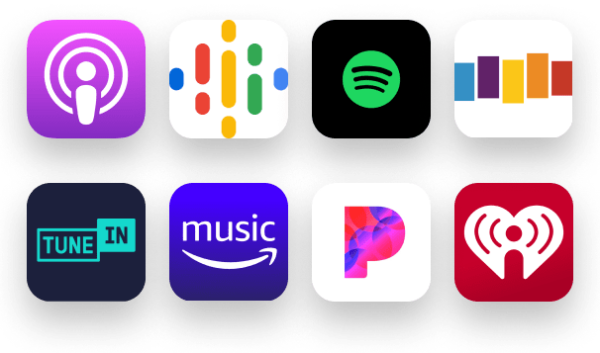
Engage with Your Audience
Building a loyal audience is essential for the success of any podcast, and TalkShoe provides tools to help you connect with your listeners on a deeper level. From live chat and audience polls to Q&A sessions and listener feedback, TalkShoe facilitates meaningful interactions that keep your audience coming back for more. By fostering a sense of community around your podcast, you can turn casual listeners into dedicated fans who eagerly await each new episode.
Analytics and Insights
Understanding your audience and tracking the performance of your podcast is crucial for growth and optimization. With TalkShoe's comprehensive analytics dashboard, you gain valuable insights into listener demographics, engagement metrics, and episode performance. Armed with this data, you can fine-tune your content strategy and make informed decisions to maximize the impact of your podcast. Whether you're looking to attract sponsors, optimize your marketing efforts, or simply better understand your audience, TalkShoe's analytics tools provide the insights you need to succeed. 
TalkShoe offers a comprehensive solution for aspiring podcasters looking to make their mark in the world of audio content. With its user-friendly features, seamless workflow, and robust distribution channels, TalkShoe empowers creators to unleash their creativity and reach new heights in the ever-expanding podcasting landscape. Whether you're a seasoned podcaster or just getting started, TalkShoe is your gateway to audio stardom. Join the podcasting revolution with TalkShoe today! With TalkShoe by your side, the only limit to your podcasting success is your imagination.
Starting a podcast can be an exciting way to share your thoughts, ideas, and expertise with a wide audience. However, as with any creative endeavour, building an audience for your podcast can take time and effort. In this blog post, we will explore 11 tips for growing your podcast audience and making your show a success.
1. Define Your Target Audience
Before you begin creating content for your podcast, it's important to have a clear understanding of who your target audience is. Knowing your audience will help you create content that is relevant and engaging for them. It will also help you to understand which platforms and marketing strategies are likely to be most effective for reaching them.

2. Create High-Quality Content
Once you know who your target audience is, it's important to focus on creating high-quality content that will keep them engaged. This means investing in good equipment, taking the time to plan and research your episodes, and putting in the effort to make sure your audio and production are as good as they can be.
3. Optimize Your Metadata
Metadata is the information that is used to identify your podcast and make it searchable online. This includes things like your podcast title, description, and episode titles. Optimizing your metadata will make it easier for people to find your podcast when they search for topics related to your content.
4. Use of Podcast Aggregators and Networks
Submitting your podcast to Podcast Aggregators and networks such as iTunes, Soundcloud, and Stitcher helps increase your visibility and attract new listeners by making it easily accessible on multiple platforms.

5. Build a Website
Having a website for your podcast is a great way to create a central hub for all of your episodes, show notes, and other related content. Your website is also a great place to include links to your social media accounts, and other ways for listeners to connect with you.
6. Utilize Social Media
Social media is a great way to promote your podcast, engage with your audience, and find new listeners. Platforms like Twitter, Instagram, and Facebook can be used to share teasers and clips from your episodes, post behind-the-scenes content, and interact with your audience.
7. Guest Appearances
Inviting guests to appear on your podcast is a great way to reach new audiences. When you bring on an expert or influencer in your field, you can tap into their existing following and expand your own audience in the process.

8. Host Live Episodes
Hosting live episodes of your podcast is a great way to engage with your audience in real-time and build a sense of community around your show. Platforms like Facebook Live, Instagram Live, and YouTube Live make it easy to host live episodes and interact with your audience in real-time.
9. Leverage SEO
SEO or Search engine optimization is essential for online promotion and can help you reach more listeners. This can be done by including relevant keywords in the title and descriptions of your episodes, as well as in the show notes and website content.
10. Reach Out to Other Podcasts
Connecting with other podcasters in your niche can help you tap into their existing audience and reach new listeners. You can reach out to other podcasters for guest appearances, collaborations, or cross-promotions to help expand your reach.
11. Create a Paid Program
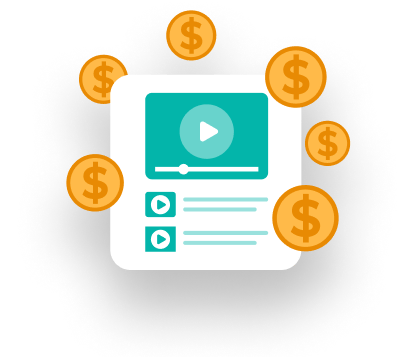
Creating a paid program is a great way to monetize your podcast while also growing your audience. By creating a paid membership program, you can provide exclusive content and additional resources to your listeners in exchange for a monthly or annual fee.
Overall, growing your podcast audience takes time and effort, but with a little bit of creativity and a lot of hard work, it is possible to build a dedicated and engaged following. Remember always to be authentic and true to yourself; your audience will naturally grow.
Remember, Podcasting is a process and it takes time to grow an audience.
Ready to take the next step and grow your podcast audience? Sign up for Talkshoe.com and join the community of podcast creators and enthusiasts. With Talkshoe.com, you'll have access to all the tools and resources you need to create a successful podcast and reach a wider audience. Sign up now and start seeing the results you deserve!
Want to explore what’s outside the norm of science? Only on TalkShoe. host Jason Charbonneau takes you on a journey into the unknown.
TalkShoe is proud to introduce the Think Anomalous podcast, an independent media producer and publisher passionate about diving deep into anomalous phenomena, making them easily accessible to a public audience.
You’ve probably heard of “paranormal” or “supernatural,” words that connote strange, out-of-the-ordinary phenomena. Things like telekinesis, UFO sightings or clairvoyance, and other happenings described by popular culture and passed down stories that live beyond the scope of science.
But have you ever heard of anomalous phenomena?
According to the Think Anomalous website, anomalous phenomena are “any reported events that cannot be attributed to known human or natural causes. To classify something as anomalous is simply to say that its cause is not yet known, and not to say that it is necessarily ‘paranormal’ or ‘supernatural’ in nature.”
This can include out-of-place animals, lucid dreaming, entity encounters with angels, extraterrestrials, and spirit beings, near-death and out-of-body experiences, channeling, mediumship, UFOs, altered states of consciousness and so much more.
 Your host Jason Charbonneau is a passionate and devoted anomalous-thinking junkie. Fueled by his interest in the history of supernatural thought in the western world, he’s been fascinated with adjusting his focus on society’s questioning regarding the unexplained. As a writer and film producer, Charbonneau works freelance while he operates and produces Think Anomalous independently.
Your host Jason Charbonneau is a passionate and devoted anomalous-thinking junkie. Fueled by his interest in the history of supernatural thought in the western world, he’s been fascinated with adjusting his focus on society’s questioning regarding the unexplained. As a writer and film producer, Charbonneau works freelance while he operates and produces Think Anomalous independently.
Think Anomalous produces easily digestible historical-style docs for YouTube, but also makes their info available via audio-only formats. With over 20 episodes to choose from on TalkShoe, you can easily get started down your own rabbit hole learning about the strange and miraculous wonders of the world.
Check out the video promo for the podcast here—->https://www.youtube.com/shorts/JTsDBLXzEcQ
Curious to listen? Visit TalkShoe and get started with these top three selected episodes:
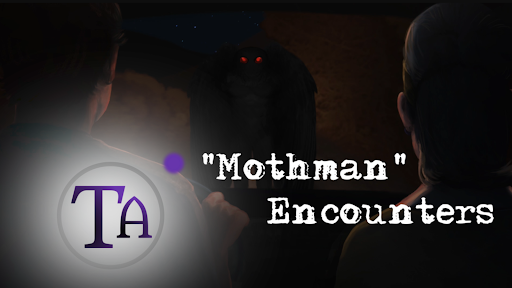 The “Mothman” Encounters, 1966-1967
The “Mothman” Encounters, 1966-1967
(Episode on TalkShoe: https://app.talkshoe.com/episode/23443557)
While the “Mothman” has become a fixture of paranormal horror since it was adapted to film in 2002, the stories it was based on were actually far stranger than anything portrayed on screen. The wide range of events that occurred in Point Pleasant, West Virginia in 1966 and 1967 remain some of the most perplexing anomalous events in history, and they implore us to consider how they all might be related.

The Jinn: Supernatural Beings of the Muslim World
(Episode on TalkShoe: https://app.talkshoe.com/episode/23443553)
The Quran tells us of invisible beings called Jinn that occasionally interact with humans. Belief in Jinn is mainly confined to the Muslim world, but nearly every culture on earth has posited the existence of similar beings
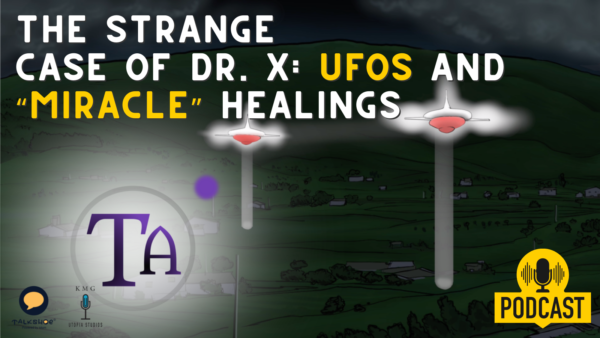
The Strange Case of Dr. X: UFOs and “Miracle” Healings
(Episode on TalkShoe: https://app.talkshoe.com/episode/23443558)
Though we tend to think of "miraculous" healings as the domain of religious miracle workers, a number of UFO witnesses claim to have been spontaneously healed during or after their sightings. By examining these kinds of anomalous effects on witnesses, we probably won't learn where UFOs come from, but we may explain what they are doing here
Visit TalkShoe for more episodes, or go straight to Patreon to become a Think Anomalous member
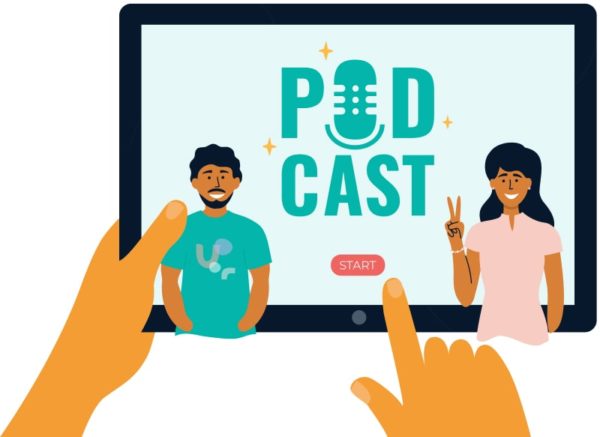 As we know, podcasts are rapidly growing as a medium in recent years. In 2018 Apple and FastCompany stated that there were over 525,000 podcasts all over the world. Today? It’s over 2 million podcast shows with more than 48 million episodes in total, showing a very rapid growth in just three years.
As we know, podcasts are rapidly growing as a medium in recent years. In 2018 Apple and FastCompany stated that there were over 525,000 podcasts all over the world. Today? It’s over 2 million podcast shows with more than 48 million episodes in total, showing a very rapid growth in just three years.
In today’s very fast-paced, knowledge-hungry society, podcasts offer a significant benefit over other primary mediums like text-based content and videos: we can listen to podcasts while doing other activities since we don’t use our eyes. It’s, for example, dangerous to read a blog post or watch a YouTube video while driving or when lifting the dumbbell in the gym, but that’s not the case with podcasts.
We are shifting from “seeing is believing” to “hearing is knowing”: podcasts offer a chance for us to consume information, gain valuable knowledge, and even learn new skills anytime and anywhere.
This is why over half of American homes nowadays are actively listening to podcasts and over 20% of the American population tune in at least once every week.
With that being said, it’s definitely a great time if you are currently looking to start a podcast, but many people are discouraged because they simply don’t know where to start.
If you are currently in that situation, you are definitely not alone, and you’ve come to the right place.
In this guide, we will discuss:
- What equipment will you need to start your own podcast show?
- How much in startup investment will you need
- What topic should you cover?
- How to get your listeners?
And more.
So, without further ado, let’s get started right away.
Start With Why
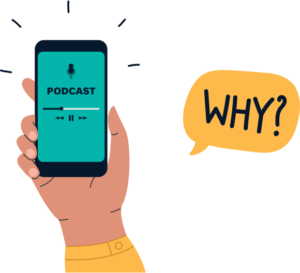 Why do you want to start a podcast in the first place?
Why do you want to start a podcast in the first place?
There can be various valid reasons here. Probably you are simply looking to get famous and hopefully, the show will go viral. This is a perfectly valid reason. Or, maybe you already have an established business and you want to start a podcast to support the business by engaging your target audience with valuable content.
Or, probably you are simply good at something and just want to share your knowledge with your audience.
It’s important to first identify your reason. Not only can it help you in deciding which audience to target and what kind of podcast show to create, keeping your “why” in mind can help you stay motivated throughout the potentially rough journey.
Identifying Your Target Audience
A common misconception is to think that only people and businesses that already have an audience (at least a few) are capable of starting a successful podcast show.
While this certainly can help, many successful podcasters start from nothing with literally 0 audiences. Many people simply don’t care if they’ve never heard of you before if your podcast episode seems interesting.
However, if you already have a bit of an audience (or a lot), then you can analyze your existing audience as the basis of your podcast’s planning stage. Figure out their demographics data, location, interests, behaviors, and pain points. You can conduct surveys and/or interviews where you can also ask what other podcast shows (if any) they often listen to.
Above anything else, it’s crucial to figure out who your podcast is for when planning the show and its content. You need to give your target audience a reason to listen to your podcast. We’ll discuss more of this in the next step.
Your Podcast’s Selling Points
Design a reason why people will listen to your podcast, which can be:
- Providing valuable information and tips
- Interviews with famous people
- Pure entertainment, for example, comedy and banter
- Unique opinion about something
And more. Your imagination is the only limit.
It’s crucial not only to give your target audience a reason to listen to your episode but also how to keep them back for more.
A great way to start is to write down a list of 10 to 20 potential episodes while considering the selling point of each.
Decide on a Show Name
The next step is to decide on a show name. You’ll need a catchy name that is attractive to your target audience, but also easy to remember.
There are several different approaches to consider when naming your podcast show:
1. Descriptive approach
A relatively boring but effective approach is to simply call your show with a descriptive name that your audience will search for. For example, if your show will cover film reviews, you can call it something along the line of “The Film Critics”.
2. The smart naming approach
In this approach, you’re going to give your podcast show a unique and potentially catchy name.
There are various techniques we can use here, for example by using portmanteau words (a fusion of two words or parts of words). However, if you use a unique name, it’s also crucial to make sure your target audience can find the show with common search phrases. A common approach is to give the show a descriptive tagline or subtitle.
For example, we can name a sci-fi enthusiast podcast “StarJunkie: All About Sci-Fi”.
3. Using your or your business’s name
If you’ve already got a substantial amount of audience, then you can leverage this fact and use your name or your brand name for the podcast. You can also combine this with the other two approaches, for example with a descriptive name like “Science Talk with John Doe”.
The Technical Side of Things
Podcast Recording Equipment
The good news is, nowadays you don’t really need expensive equipment to start recording your podcast.
If you have a working computer/laptop, a USB microphone (which is very affordable nowadays), and internet access, then you are basically good to go. Obviously a more expensive and complete setup can provide better sound and production quality, but you can create a pretty decent show with just this bare minimum setup.
If you have more budget, you can consider more expensive microphones, a mixer, and other pieces of equipment. Here are some podcasting tools and equipment to consider:
- USB audio interface: useful if you are using XLR microphones (non-USB microphones), will convert the analog signal from the mic into a digital signal.
- Mixer: technically an audio interface, but you’ll have more physical knobs and sliders on the device to control input/output levels, panning, and more. There are mini-mixers designed specifically for podcasts
- Headphones: for monitoring the podcast so you can avoid mistakes and retakes
- Windscreen: to protect your microphones from plosive sounds
- Mic stands: to hold the microphone in place, which can significantly help with sound quality
Software Infrastructure
We’ve discussed that you can basically start recording your podcast with just a computer and USB microphone. Yet, what should you do once you plug the USB microphone into the computer?
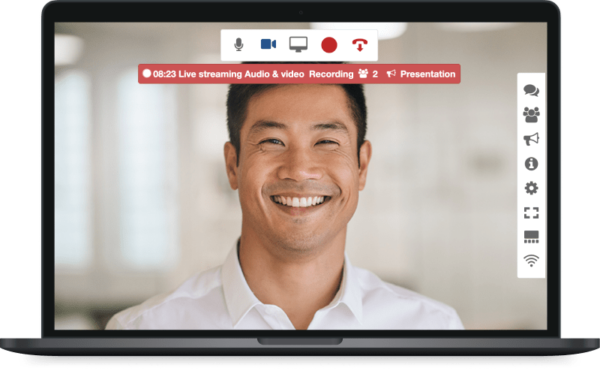 This is where the software tools will do their job.
This is where the software tools will do their job.
Basically, you’ll need the help of software solutions in three key areas:
- Record: recording your show. Digitizing the audio data from your microphone to a distributable format.
- Edit: edit the recorded data so it becomes a coherent, presentable podcast episode.
- Hosting: distributing the recorded and edited show to various podcast channels.
With TalkShoe as an all-in-one podcasting solution, you get all three functions in a single software, so you don’t have to worry about moving between different tools and importing or exporting files, which is often a hassle.
A common misconception when discussing how to start a podcast is that we upload the podcast directly to channels like Spotify or iTunes, but that isn’t actually the case. Instead, we’ll need a hosting service to host the audio files. The hosting service will then distribute the podcast to relevant channels.
TalkShoe is also a comprehensive podcast hosting service so you can record, edit, and publish your shows in a single dashboard.
Podcast RSS
Another key consideration when choosing your podcast software is the capability of generating an RSS feed. For podcasts, an RSS feed is crucial since podcast episodes are syndicated and distributed through RSS. Think of the RSS as your podcast show’s URL.
While it’s possible to code your own podcast feed, having a platform like TalkShoe that can automatically provide your podcast’s own RSS feed can take the hassle of coding your own from your podcast production process.
With the RSS code provided upon signing up to TalkShoe, your podcast is immediately available across multiple popular channels like Spotify, Apple Podcast/iTunes, and more. You don’t need any programming knowledge and can focus on what matters: your show’s content.
Live Podcasting
In this day and age where Zoom is the norm, live podcasting is now a popular thing, and if you plan to host live episodes, you’ll need to get the right software solution that will enable you to do so.
TalkShoe offers a live virtual studio, allowing you to invite guests and co-hosts to your live podcasts easily via a functional video conferencing function. Your guests and/or co-hosts can easily join the live podcast from any device, and you can easily invite guests via email, SMS, or even by simply sending your virtual studio’s URL.
Within the virtual studio, you can start and stop recording seamlessly. This is useful in online real-time recording situations since this means you can pause the show when there are any delays or issues with your guest’s connection, and resume the show again when you are ready to record.
Video Recording
While there are many purists that would argue that podcasts should be audio-only, we can’t deny the fact that many popular podcasts have successfully cross-list the podcast videos in video formats on YouTube and other platforms.
If you want to do this, again, you’ll need a software solution that allows you to also record videos. TalkShoe not only lets you record video along with your audio data but also directly live broadcast your episode to YouTube. This is a great way to expand your audience.
Marketing Tips for Your Podcast
We all know one of the biggest challenges in running a podcast show is how to market your show to attract more listeners.
Here are a few actionable tips you can try:
Optimize episodes with strong keywords
Carefully consider what words and phrases your potential listeners would type into a Google search or the search bar of Spotify, iTunes, or other podcast streaming services.
Use these keywords in your title and show description. Refer back to the naming section above on how to create unique podcast names that are also optimized for search keywords.
Optimize your show’s description
Your show’s and episodes’ descriptions will be the main reason potential listeners click (or don’t click) and listen to the show. So, it’s crucial to write descriptions that are attractive for your listeners, but at the same time only giving just enough information to leave them hanging. Don’t forget to include your target keywords and relevant links.
Leverage social media
Fairly obvious, social media is where everyone is nowadays, so it would only make sense to market your podcast on key social media channels like Facebook, Instagram, and Twitter. Also, don’t underestimate LinkedIn especially if your podcast is targeting professionals and businesses.
Be active on your social media accounts, and use the paid promotion options strategically.
Include show notes and transcriptions
Beyond your episode descriptions, consider including show notes or even full transcriptions of your show. A full transcript can actually be useful for SEO, and services like TalkShoe can help in this aspect by automatically generating a transcript.
Cross-promote your show
Don’t treat other podcasts as competitors, but reach out to them and find opportunities for collaborations and cross-promotions. Be a guest on other shows, and recommend other podcasts in your show and vice versa.
Closing Thoughts
By following the tips and tricks we’ve shared above, you are now ready to create a successful podcast and attract a lot of listeners.
While planning and building a successful podcast takes patience and practice, platforms like
TalkShoe can give you all the help you’ll need throughout the exciting journey. Our community-building podcast platform has all the essential features you’ll need: free unlimited storage, automated RSS feed generation, all-in-one recording and editing functions.
Your voice is literally just episodes away from being heard by your listeners.
Why Your Company Should be Podcasting ( and Podcasting with Talkshoe)
From traditional radio to blogs to social media, there are more ways for people to consume media than ever before. For marketers and business owners, this means more ways for you to reach—or not reach—your target audience! Whether it's the attention of millennials, teens, or baby boomers that you’re after, podcasting has become an important medium for a wide variety of audio content and definitely one that your business should be considering. In today blog, we’ll be exploring some of the reasons why TalkShoe podcasting should be a part of your business’ communications strategy.
What is a Podcast?
If you’re not already familiar with podcasting, learning what a podcast is is a great place to start. A podcast is a published digital audio file that can be accessed online and downloaded onto a computer or mobile device for the listener to listen to at any time. Much like the segments of your favorite radio talk show program, individual podcasts are often published as part of a recurring series by the host or creator of the show. Listeners can subscribe to ( “follow”) particular podcast shows so that they can be alerted when a new episode is published.
Free Podcasting on TalkShoe
Talkshoe is a platform that allows you to create, record, publish, and store podcasts—all at no cost! Easy to set up and free to use, Talkshoe is the perfect space to start cultivating a following through podcasting. TalkShoe offers a host of benefits for creating, managing, and listening to your live and recorded audio podcasts.
 How TalkShoe Podcasting Can Benefit Your Business
How TalkShoe Podcasting Can Benefit Your Business
Position Your Company as the Thought Leader
You know your business and industry better than anyone else, and people like to buy from experts. Streaming and recording regular TalkShoe podcasts is a great way to engage with new audiences and build a following around content relevant to your business. Adding podcasts to your marketing communications strategy is a great way to enhance yourself and your company as an authority on whatever subject matter or industry you’re into.
Increase Company Visibility
When it comes to marketing, it’s never a bad idea to have more channels of exposure to your target audience. One of the great things about podcasts can be listened to anytime, anywhere—from your website, from iTunes, on iPods and MP3 players—and, if they’re interesting enough, can be spread virally across the internet!
Reach the Internet Generation
There’s a whole generation of people who no longer consume traditional media. Many of them listen to podcasts and other types of live streaming / on-demand media platforms. This audience is young, savvy, educated, and has a significant amount of disposable income. If you produce regular, high-quality content available via downloadable podcasts, you could develop a following among the very people you are trying to market to.
Make TalkShoe Podcasting Part of Your Communications Mix!
Whether you run a small side business that you'd like to promote or are trying to develop new audiences to market your company to, TalkShoe is the perfect platform to start your podcasting journey. Take advantage of TalkShoe’s free podcast streaming and hosting platform as well as the service’s existing user base to attract listeners. Sign up for TalkShoe is quick and easy. Why not start today?
Are you ready to supercharge your podcasts, and make the most of our new features and benefits that TalkShoe has to offer? Why not record an episode today, and see what everyone’s talking about!








 Your host Jason Charbonneau is a passionate and devoted anomalous-thinking junkie. Fueled by his interest in the history of supernatural thought in the western world, he’s been fascinated with adjusting his focus on society’s questioning regarding the unexplained. As a writer and film producer, Charbonneau works freelance while he operates and produces Think Anomalous independently.
Your host Jason Charbonneau is a passionate and devoted anomalous-thinking junkie. Fueled by his interest in the history of supernatural thought in the western world, he’s been fascinated with adjusting his focus on society’s questioning regarding the unexplained. As a writer and film producer, Charbonneau works freelance while he operates and produces Think Anomalous independently. 


 As we know, podcasts are rapidly growing as a medium in recent years. In 2018 Apple and
As we know, podcasts are rapidly growing as a medium in recent years. In 2018 Apple and  Why do you want to start a podcast in the first place?
Why do you want to start a podcast in the first place? This is where the software tools will do their job.
This is where the software tools will do their job. How TalkShoe Podcasting Can Benefit Your Business
How TalkShoe Podcasting Can Benefit Your Business